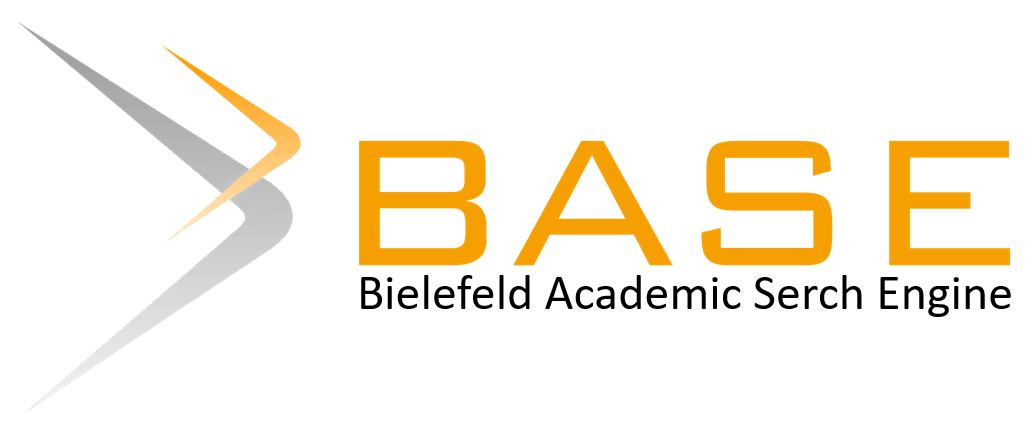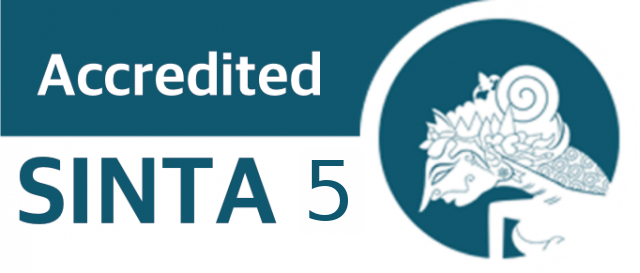Profil Pekerja Pemanen Kelapa Sawit Bagian Cutting Egrek
DOI:
https://doi.org/10.30595/hmj.v4i2.9931Keywords:
cutting egrek, palm oil, manual handling, musculosceletal disordersAbstract
Musculoskeletal Disorders (MSDs) is a label for the perception of pain or pain in the musculoskeletal system. MSDs can be caused by the equipment, techniques, and activities performed during work. Harvesters who use manual techniques or cutting egrek have the potential risk for MSDs as a result of an ergonomic work attitude and posture. This study aims to determine the profile of oil palm harvesters using cutting egrek techniques. This research is a descriptive research with the survey method. Samples were obtained by systematic random sampling method, amounting to 82 people. The data used in this study are primary data and secondary data. Most CuE technique oil palm harvesters were at the age of 41-50 years, working period of 6-10 years, and with a work posture that needed immediate improvement, and 76.8% suffered from MSDs complaints. So that it is necessary to have immediate intervention from companies and workers to reduce the risk of MSDs complaints in the future, especially in posture and work techniques.
References
1. Tarwaka SHB, Kerja K. Ergonomi Untuk K3 dan Produktivitas. ed 1. Surakarta: UNIBA Press; 2004.
2. Guo HR, Chang YC, Yeh WY, Chen CW, Guo YL. Prevalence of Musculoskeletal Disorder among Workers in Taiwan: A Nationwide Study. J Occup Health. 2004;46(1):26–36.
3. Syuaib M, Dewi N, Sari T. Studi Gerak Kerja Pemanenan Kelapa Sawit Secara Manual. J Keteknikan Pertan. 2015;3(1):21699.
4. Fery Matrik Setiawan, Ayiek Sih Sayekti IL. Kajian Profil Tenaga Kerja Panen Kelapa Sawit Di Pt. Subur Arum Makmur Di First Resources Riau. J Masepi. 2017;2(2):168–9. Available from: http://36.82.106.238:8885/jurnal/index.php/JMI/article/view/472
5. Indonesia, Kementerian Kesehatan. Profil Kesehatan Indonesia Tahun 2014. Yudianto, SKM MS, Budijanto, Dr. drh. Didik MK, Hardhana, Boga , S.Si M, Soenardi, drg. Titi Aryati MK, editors. Jakarta: Kementerian Kesehatan RI.; 2015. 382 p.
6. Simamora AW;, Sayekti WD, Situmorang S. Produktivitas Tenaga Kerja Pemanen Di Pt Perkebunan Nusantara Vii Unit Kebun Kelapa Sawit Rejosari. JIIA. 2016;4(2):152–60.
7. Putri BA. The Correlation between Age, Years of Service, and Working Postures and the Complaints of Musculoskeletal Disorders. Indones J Occup Saf Heal. 2019;8(2):187.
8. Lee JG, Kim GH, Jung SW, Kim SW, Lee JH, Lee KJ. The association between long working hours and work-related musculoskeletal symptoms of Korean wage workers: Data from the fourth Korean working conditions survey (a cross-sectional study) 11 Medical and Health Sciences 1117 Public Health and Health Services. Ann Occup Environ Med. 2018;30(1):1–11.
9. Sarkar K, Dev S, Das T, Chakrabarty S, Gangopadhyay S. Examination of postures and frequency of musculoskeletal disorders among manual workers in Calcutta, India. Int J Occup Environ Health [Internet]. 2016;22(2):151–8. Available from: http://dx.doi.org/10.1080/10773525.2016.1189682
10. Hossain MD, Aftab A, Al Imam MH, Mahmud I, Chowdhury IA, Kabir RI, et al. Prevalence of work related musculoskeletal disorders (WMSDs) and ergonomic risk assessment among readymade garment workers of Bangladesh: A cross sectional study. PLoS One. 2018;13(7):1–18.
Downloads
Published
Issue
Section
License
For submission of manuscripts to the Herb-Medicine Journal, the authors must certify that:
I have been authorized by my co-author to submit the manuscript to the Herb-Medicine Journal
I hereby declare, on behalf of myself and my co-authors, that:
The submitted manuscript is original work and has not been published in another peer-reviewed journal or is being considered for publication by another journal. Also, the manuscript does not infringe any existing copyright or other third party rights.
The manuscript does not contain material that may violate the law, slander, or SARA, in any way, violates the terms and conditions contained in the agreement
I/we have taken care that the scientific knowledge and all other statements contained in the manuscript are in accordance with authentic facts and formulas and will not, if followed appropriately, harm the user
No liability shall be assumed by Herb-Medicine Journal, its staff or members of the editorial board for any injury and/or damage to persons or property as a matter of product liability, negligence or otherwise, or from the use or operation of any method, product instructions, advertising , or ideas contained in publications by the Herb-Medicine Journal
Authors who publish in the Herb-Medicine Journal certify that all authors have read and agree to the contents of the Cover Letter or the Terms and Conditions. Plagiarism is strictly prohibited, and by submitting a manuscript for publication, the author agrees that the publisher has the legal right to take appropriate action against the author, if plagiarism or false information is found. Once submitted to the Herb-Medicine Journal, authors will not withdraw their manuscript at any stage prior to publication.
The author owns the copyright and grants the journal rights for first publication with the work simultaneously licensed under a Creative Commons Attribution License which allows others to share the work with acknowledgment of the work's authorship and initial publication in this journal.
Authors may enter into separate additional contractual agreements for the non-exclusive distribution of the published journal version of the work (for example, posting it to an institutional repository or publishing it in a book), with acknowledgment of its initial publication in this journal.
Authors are permitted and encouraged to post their work online (for example, in institutional repositories or on their websites) prior to and during the submission process, as this can lead to productive exchanges, as well as earlier and larger citation of published work (See The Effects of Open Access).
Untuk pengiriman naskah ke Herb-Medicine Journal, penulis harus menyatakan bahwa:
- Saya telah diberikan otorisasi oleh rekan penulis saya untuk memasukkan naskah ke Herb-Medicine Journal
- Saya dengan ini menyatakan, atas nama saya dan rekan penulis saya, bahwa:
- Naskah yang dikirimkan adalah karya asli dan belum pernah diterbitkan dalam jurnal peer-review lain atau sedang dipertimbangkan untuk diterbitkan oleh jurnal lain. Serta, naskah tidak melanggar hak cipta yang ada atau hak pihak ketiga lainnya.
- Naskah tidak mengandung materi yang mungkin melanggar hukum, memfitnah, atau SARA, dengan cara apa pun, melanggar syarat dan ketentuan yang tercantum dalam perjanjian
- Saya / kami telah berhati-hati bahwa pengetahuan ilmiah dan semua pernyataan lain yang terkandung dalam naskah sesuai dengan fakta dan formula otentik dan tidak akan, jika diikuti dengan tepat, merugikan pengguna
- Tidak ada tanggung jawab yang ditanggung oleh Herb-Medicine Journal, stafnya atau anggota dewan editorial untuk setiap cedera dan/atau kerusakan pada orang atau properti sebagai masalah pertanggungjawaban produk, kelalaian atau sebaliknya, atau dari penggunaan atau pengoperasian metode, produk apa pun instruksi, iklan, atau ide yang terkandung dalam publikasi oleh Herb-Medicine Journal
Penulis yang menerbitkan dalam Herb-Medicine Journal menyatakan bahwa semua penulis telah membaca dan menyetujui isi Surat Pengantar atau Syarat dan Ketentuan. Plagiarisme dilarang keras, dan dengan menyerahkan naskah untuk publikasi, penulis setuju bahwa penerbit memiliki hak hukum untuk mengambil tindakan yang pantas terhadap penulis, jika ditemukan plagiarisme atau informasi palsu. Setelah diserahkan ke Herb-Medicine Journal, penulis tidak akan menarik naskah mereka pada tahap apa pun sebelum dipublikasikan.
Penulis memiliki hak cipta dan memberikan hak jurnal untuk publikasi pertama dengan karya yang secara simultan dilisensikan di bawah Lisensi Creative Commons Attribution yang memungkinkan orang lain untuk berbagi karya dengan pengakuan kepengarangan karya dan publikasi awal dalam jurnal ini.
Penulis dapat membuat perjanjian kontrak tambahan yang terpisah untuk distribusi non-eksklusif versi jurnal yang diterbitkan dari karya tersebut (misalnya, mempostingnya ke repositori institusional atau menerbitkannya dalam sebuah buku), dengan pengakuan atas publikasi awalnya di jurnal ini.
Penulis diizinkan dan didorong untuk memposting pekerjaan mereka secara online (misalnya, dalam repositori institusional atau di situs web mereka) sebelum dan selama proses pengajuan, karena dapat menyebabkan pertukaran yang produktif, serta kutipan yang lebih awal dan lebih besar dari karya yang diterbitkan (Lihat The Effect of Open Access).













